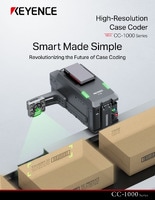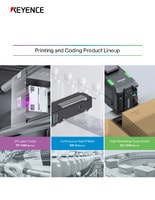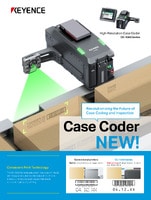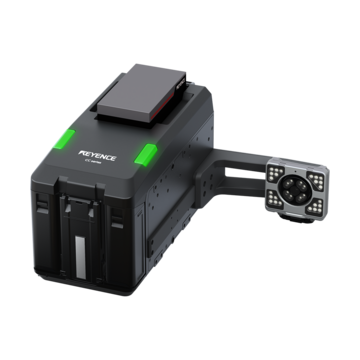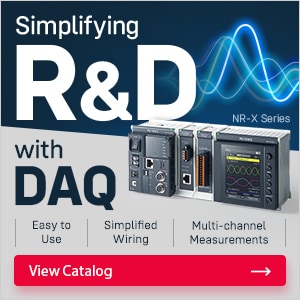Continuous Inkjet Printers / Case Coder
Materials and Products
Production Machines
Printing Applications
Why 2D Code Printing and Inspection on Cases Are Surging in Food Packaging
Key Takeaways
- Strict traceability regulations drive adoption of 2D code printing on outer packaging cases.
- Direct case marking boosts code durability and eliminates costs linked to traditional labels.
- Integrated vision inspection verifies code readability in real time, preventing non-compliant shipments.
- High-speed inkjet printers print clear 2D codes on cases at line speeds over 60 cases/min.
- Automated coding enhances supply chain transparency, minimizing recall risks and response times.
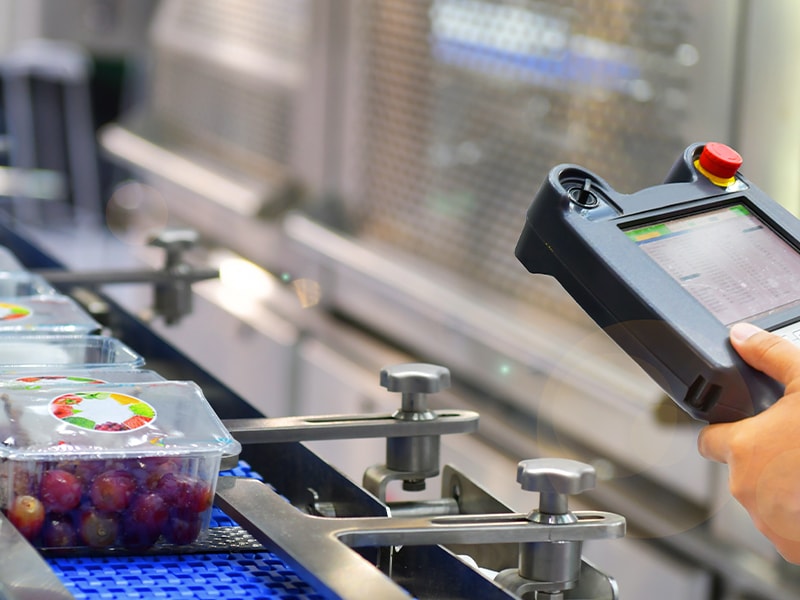
The packaging industry is undergoing a major change. Once dominated by simple 1D barcodes, it’s now shifting toward advanced 2D code printing that delivers more information, greater flexibility, and stronger connections between a physical product and its digital identity. This change is not happening by chance; it’s being accelerated by new global standards, tougher regulatory requirements, increased automation, and a rising demand for food packaging traceability from both retailers and consumers.
In food production, especially, this shift impacts more than just the appearance of a label. It changes how traceability data is captured, how quickly recalls can be managed, and how effectively a brand can meet packaging compliance requirements without slowing production. At the same time, automation is removing traditional manual checks, making it vital to combine high-quality printing with inline 2D barcode inspection to verify accuracy at full speed.
What’s Driving the Rise of 2D Codes in Food Packaging?
The GS1 “Sunrise 2027” initiative is at the heart of the movement. This global standard will make GS1 Digital Link 2D codes accepted at the point of sale worldwide, replacing the need for multiple data carriers on a single package. One scan can now deliver point-of-sale data, feed warehouse inventory systems, or provide shoppers with direct access to ingredient lists, allergen details, and sustainability information.
Consumer expectations are pushing adoption just as much as regulatory updates. Recent data shows that over 75% of shoppers value detailed product information when deciding on a purchase, and nearly 80% are more likely to buy if they can scan a code on their phone for instant access. Brands are responding by adopting case coding systems capable of embedding this information in a single, scannable code.
For forward-looking manufacturers, early adoption is already paying off. 2D codes are being used to speed up stock rotation, run targeted promotions, reduce waste, and improve recall processes, all well ahead of the 2027 implementation date.
We’re here to provide you with more details.
Reach out today!

Regulatory and Consumer Transparency Demands
Compliance pressures are mounting. In the U.S., the FDA’s Food Traceability Final Rule (FSMA 204) requires end-to-end food packaging traceability for certain categories, with detailed records maintained at each stage of the supply chain. In Europe and other markets, similar requirements are in place or on the horizon.
A GS1 Digital Link 2D code allows those records to travel with the product itself. A scan by a retailer’s POS might confirm batch and tax data, while a consumer scanning the same code could view recipes, farm-of-origin details, or storage recommendations. The same system supports packaging compliance by keeping all required information accessible without crowding the physical label.
On the operations side, rich code data can streamline product changeovers, reduce labeling errors, and feed directly into automated quality control systems. By aligning compliance and transparency goals within a single automated print inspection system, manufacturers can achieve both regulatory compliance and customer trust.
Serialization and Product Authenticity
Serialization assigns each product or batch a distinct, traceable identity, so that, in the event of a recall, this level of precision allows only the affected units to be removed from distribution, rather than entire shipments, resulting in less waste, lower recall-related costs, and minimal disruption to retail supply.
Serialization also helps protect against counterfeiting. With a single scan, distributors and retailers can confirm when and where a product was manufactured and verify its movement through the supply chain.
For high-risk or high-value categories, such as fresh food, infant formula, or specialty packaged goods, implementing serialization through 2D code printing provides a controlled, verifiable method of maintaining product integrity from production to point of sale.
Curious about our pricing?
Click here to find out more.

Integrating 2D Printing and Inspection into Packaging Lines
The transition to 2D codes is not just a matter of swapping printers. Dynamic, variable data has to be applied inline, at the speed of production, and often to materials that vary in texture, shape, or finish. High-speed case coding environments can process hundreds of units per minute, making code stability and readability a significant challenge.
Automation compounds the need for integrated verification. When palletizing robots replace manual stacking, there’s no operator looking for smudges or missing codes. This is where automated print inspection systems are needed to validate every mark before it leaves the line, without slowing production or adding manual steps.
CC-1000 Series: Built for Compliance and Speed
The CC-1000 Series addresses these realities head-on. It delivers 360 DPI resolution with a long throw distance, maintaining high print quality on corrugated cases, glossy cartons, or uneven surfaces. An integrated 2D barcode inspection camera checks each code immediately after printing, catching any problem before it moves downstream.
Its multi-sensing unit tracks line speed, target distance, and vibration, adjusting in real time for consistent quality. Printing and inspection are controlled from a single touch panel, reducing complexity during product changeovers.
Maintenance is designed for speed and simplicity. The print head can be replaced with a single touch, and the cleaning process is engineered to prevent nozzle damage that would otherwise lead to downtime. In parallel, the system’s analytics monitor print quality over time, highlighting gradual shifts so they can be corrected early to help keep packaging compliance on track, even in demanding, high-volume production environments.
Discover more about this product.
Click here to book your demo.

Advantages Over Traditional Coding Systems
Conventional setups often separate printing and inspection, requiring more equipment, more setup time, and more chances for misalignment. Without integrated inspection, defective codes might only be caught during random checks, if they’re caught at all.
The CC-1000 Series combines case coding and automated print inspection systems in a single unit, reducing equipment footprint, setup time, and waste. Fewer unreadable codes mean fewer rejected cases, faster recalls when needed, and better compliance performance. As 2027 approaches, it’s already capable of meeting the data capacity requirements for GS1 Digital Link 2D codes.
Elevate Traceability with 2D Code Tech
The rise of 2D code printing is reshaping how food packaging connects to data. For manufacturers, it’s a direct route to better food packaging traceability, smoother compliance, and stronger customer engagement.
The MK-G Series continuous inkjet printers and the CC-1000 Series make it possible to apply and verify high-quality codes in a single process, even in the most demanding production environments. It’s a solution built for speed, accuracy, and the evolving demands of modern packaging compliance.
Contact us today to get started.
Contact us to learn more about how our advanced technology can help take your business to the next level.
Contact Us
FAQs
Are 2D Codes Mandatory for All Food Products?
Not in every market, but deadlines are coming. FSMA 204 in the U.S. and retailer-led requirements are accelerating adoption, and GS1 Sunrise 2027 sets a global target for POS acceptance.
How Does 2D Inspection Help with Product Authenticity?
Inline inspection verifies each code at the moment it’s applied, catching errors in data, positioning, or clarity before the case moves down the line. When paired with serialization, this immediate verification creates a secure audit trail that supports full traceability and makes it far more difficult for counterfeit products to enter legitimate distribution.
What Industries Beyond Food Are Adopting 2D Codes?
Pharmaceuticals, cosmetics, automotive, and logistics use them for 2D barcode inspection, traceability, and anti-counterfeiting, often paired with automated print inspection systems for full process control.
We’re here to provide you with more details.
Reach out today!

Related Downloads
Related Products
Applications
Materials and Products
- Glass Bottles
- Plastic Bottles/Containers
- Cans
- Wires, Cables, & Pipes
- Pouches
- Metal Parts
- Corrugate Boxes
- Packaging Film
- Kraft Packaging
- Folding Cartons
- Building Materials
- PCBs
- Cartons
- Pallets & Lumber
- Corrugate Trays
Production Machines
- Paper Bag Packaging
- Box Conveyor
- Automatic Palletizer
- Sealer/Taping Machine
- Bottle Filling Machine
- Flow Wrapper

